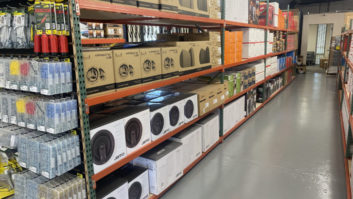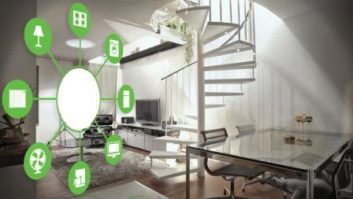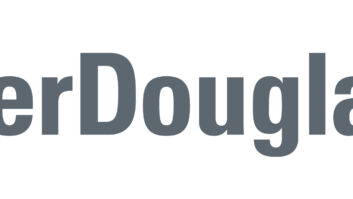The majority of custom installers polled by CEDIA experienced growth in the first half of 2002, and on average they predict double-digital percentage gains in revenue in 2003.
The poll also found that custom A/V installers haven’t moved aggressively into related fields, although the typical installation company expects its revenues in those segments to grow in 2003.
In partnership with Indiana University, CEDIA surveyed members via the Internet in July and August, sending out six weekly surveys, each focusing on a particular topic. A total of 256 members, or 17 percent of the association’s roster, responded to at least one survey. Of those, around 44 were based outside the United States. A total of 153 members completed all six surveys.
Here’s what else CEDIA found:
Business conditions: Out of all 256 respondents, 60.5 percent said the custom business in their markets was improving over 2001, while 27.7 percent saw little change, and 8 percent saw conditions worsening. The rest had no response.
Among U.S. respondents, a greater percentage of installers in the Northeast and South were experiencing growth: 69.2 percent and 60.8 percent, respectively, while only half of the installers polled in the Midwest said their revenues were increasing. Fifty-one percent in the West said they were growing.
In Canada, 85.7 percent of the polled installers reported growth, the same percentage as in Australia and New Zealand. More than 81 percent of the installers in other countries were reporting growth.
In anticipation of the growth, 71 percent of the 256 companies said they will hire people in 2003. Twenty-two percent will maintain their employee levels, and 18 percent will cut.
Among the 256 respondents, only 32 plan to add locations in 2003.
For the first half of the year, 165 companies reported average revenues of $1.6 million, with a median figure of $489,000.
Great expectations: In 2003, a resounding majority of respondents expect growth in most product segments, on average with double-digit percentage gains.
More than 80 percent expect growth in distributed audio, home theater and home automation, with near-80-percent majorities expecting growth in distributed video and lighting controls.
More than 60 percent expect A/V growth, and less than 60 percent expect growth in security and communications.
How much growth? On average, installers expect the most growth in non-A/V-related categories, likely reflecting their increased interest in diversifying. They expect about 28 percent growth in lighting controls and more than 25 percent growth in home theater, and near-25-percent gains in security and home automation. Average growth expectations for communications were about 17 percent.
In the core distributed-audio and distributed-video categories, average growth is seen at about 18 percent and 16 percent, respectively.
Major revenue streams: For now, however, non-A/V categories don’t generate a lot of revenue for installers. When asked to name their top revenue generators, 60 percent of 157 respondents ranked distributed-audio and home theater as either first or second. The percentage of respondents citing other categories as their first- or second-ranked revenue streams were: security, about 12 percent; lighting controls, about 18 percent; communications, about 8 percent; and home automation, about 13 percent. Distributed-video was cited by only 10 percent.
In terms of profit-margin dollars per job, the results were similar. When the 157 respondents were asked to rank product segments by dollar-margin per job, 70 percent ranked home theater as first or second, and about 55 percent ranked distributed audio as first or second. Lighting controls were cited by about 25 percent, followed by home automation, cited by about 28 percent. Five percent cited communications.
Business strategies: By and large, the vast majority generate new customers through customer referrals, the survey found. Of 168 companies responding, almost 90 percent said they used customer referrals. About half also used billboards, newspaper ads and yellow pages directories to prospect for customers. Slightly less than 40 percent use direct mail, and slightly more than 30 percent use Internet marketing and magazine ads. Less than 20 percent use radio, and slightly fewer use TV. Less than 10 percent use movie-screen ads.
Apparently, the installers have been busy enough to generate a lot of referrals. Of 168 respondents, 55 percent have been in the custom business for six to 15 years, and 28 percent have been in business more than 15 years.
The average size of a custom company is 4.4 employees, at least among the 162 companies that answered the question. The median company employs three. At the median company, custom installers who have been with the company for three years earn about $35,000, while entry-level installers earn about $22,000. Designer/installers at the median company earn a tad over $40,000, while salespeople earn about $45,000.
Among salespeople, 45 percent are compensated by combination salary/ commission plans, while 39 percent get a straight salary and 16 percent are on a commission-only plan.













